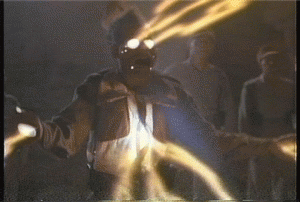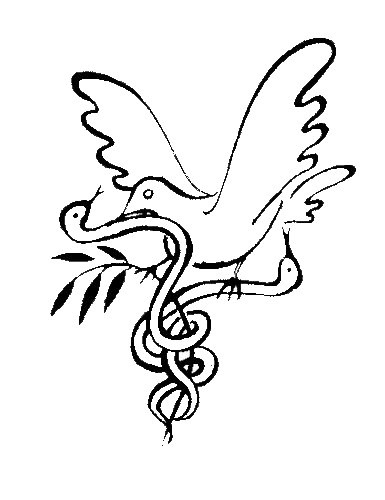July 29, 2009
Shekhinah Power
 Is it possible that our ancestors harnessed the power of electricity?
Is it possible that our ancestors harnessed the power of electricity?
It’s logically possible that electric motors pre-dated steam engines, and tantalizing writings combined with circumstantial evidence suggest that the ancients understood more than static electricity and simple batteries.
This question is yet another reformulation of the regard we hold for the wisdom of the ancients, and if their models and perspectives might offer anything meaningful to today’s scientists and philosophers. Even the alternative researchers who investigate these claims often feel the need to invoke atlanteans, martians, or time travelers as the deus ex machina to explain their origin.
A recent constellation of events and ideas (MiT6, Intentional Energy, Faith’s Transmission) in my life has brought me back to this question. If the ancients had developed a theory of everything, how might they have encoded this message for transmission into the future? Would their theory of everything incorporate/integrate subjectivity and consciousness, unlike our generation’s leading contenders?
The following free association provides a glimpse at what a message like that could look like.
Religion is a process of turning your skull into a tabernacle, not of going up to Jerusalem once a year.[*]
I have been investigating spiritual mysteries for decades – I maintain my own personal X-Files, some of which are documented on this blog. In June ’95 I even traveled to West Africa following up a lead on the descendants of Joseph and the Arc of the Covenant. (I found everything I was looking for, and more, but that’s a story for another post).
Crackpots and scholars alike have recognized the electrical potential of the Arc. Most famously, Eric Von Daniken has popularized this interpretation of its intrinsic physical properties in Chariots of the Gods.
The blueprints of the Arc are described in intricate detail in Exodus – Gold box/wooden box/gold box. Gold is one of the best conductors on the periodic table (think stereo cables), so the Arc was an electromagnetic sandwich — conductor/insulator/conductor — the very definition of a capacitor. A physical device capable of storing electrical charge — a.k.a. a battery.
That the Arc might have held electrical charge is consistent with the stories told about it. People who touched it died instantly, it was carried by the Levites into battle, and its divine fire even was known to kill the wicked.
Bracketing for a moment the source of this wisdom, if the Arc was used as a battery, the next logical questions are: How was it charged? What did it power?
They Kept Going and Going
The utility of electrical power in ancient times is simple. Even untamed electricity might have been quite valuable in an era when its sparks would have been regarded as miraculous. Speculative research suggests the some kinds of applications that electricity could have powered – lighting up the high preist’s breastplate, or perhaps even a transmitter or a manna machine.
Charging is a bit more complicated. For years my imaginations has been conceptually trapped inside the holy of holies — struggling to imagine how on earth the high priest might have been able to transform spiritual energy (or information) into energy we could do work with on this planet (e.g. electrical energy). Recently I realized that the Tabernacle was actually flowing with physical energy. The priest’s entire system of sacraments and service could have been organized around collecting, transforming, storing, and harnessing electrical energy.
Not only were the priests playing with fire, pouring gallons of blood through intricate piping, and baking bread and cooling in on strange conductive structures (see the Mishkan or watch the movie), but I had an epiphany around the suggestive “potential” of the priest’s very strange uniforms.
The Israelite priests were actually commanded to wear uniforms which juxtaposed wool and linen — a combination of materials forbidden to the laypeople, and also quite capable of holding a static charge (especially with the help of balloons 😉 ). Additionally, they also wore the fringes whose craft has been preserved by Orthodox Jews to this day. Imagine if these fringes were wrapped in wire instead cotton — they could have stepped up/down the voltage of the charge flowing through them. It is not necessary to demonstrate that these ritual artefacts were ever made to these specifications. They testify to the fact that the Israelites had the knowledge and skill to braid electrically sound cabling.
Still Suits for Charge
Here is one possible scenario: The priest reports to duty, grounds themselves on the Temple Grid, work all day long, generating a bit of static charge, and then deposits that charge into the power bank of the Arc of the Covenant.
What if all of the activities conducted in the Tabernacle were oriented around collecting, transforming, and storing charge? Would this scientific/rational explanation for the miracles in the desert denigrate or diminish their significance? Or, would this kind of explanation elevate their status, and help remind people of how miraculous the world is on a continuous basis?
Coda
I am currently in discussions with legal council about the possibility of patenting ideas related to and inspired by my interpretation of the biblical accounts of the tabernacle artefacts and the corresponding priestly activities. Regenerative living suits might have incredible potential to help raise energy awareness (and in turn, responsibility, and intentionality). I doubt that I would be able to recapture very much electricity from my everyday motions, but perhaps enough to play a few songs on my mp3 player or talk for a few minutes on my cell phone. I know if I were camping, this energy would be priceless.
If I pull this off, would the Israelites need to license my patents when they rebuild their temple? I suppose they could always just relinquish their hold on Intellectual Property entirely… I would be happy either way 😉
I have to admit, I am amused just thinking about the testimony to invalidate my patent based on biblical prior-art. Intriguingly, this historical hypothesis is testable…
See, I have called by name Bezalel the son of Uri, the son of Hur, of the tribe of Judah; and I have filled him with the spirit of God, in wisdom, and in understanding, and in knowledge, and in all manner of workmanship, to devise skilful works, to work in gold, and in silver, and in brass, and in cutting of stones for setting, and in carving of wood, to work in all manner of workmanship. [*]
 Filed by jonah at 8:42 pm under aesthetics,air,earth,metaphysics
Filed by jonah at 8:42 pm under aesthetics,air,earth,metaphysics
 2 Comments
2 Comments


